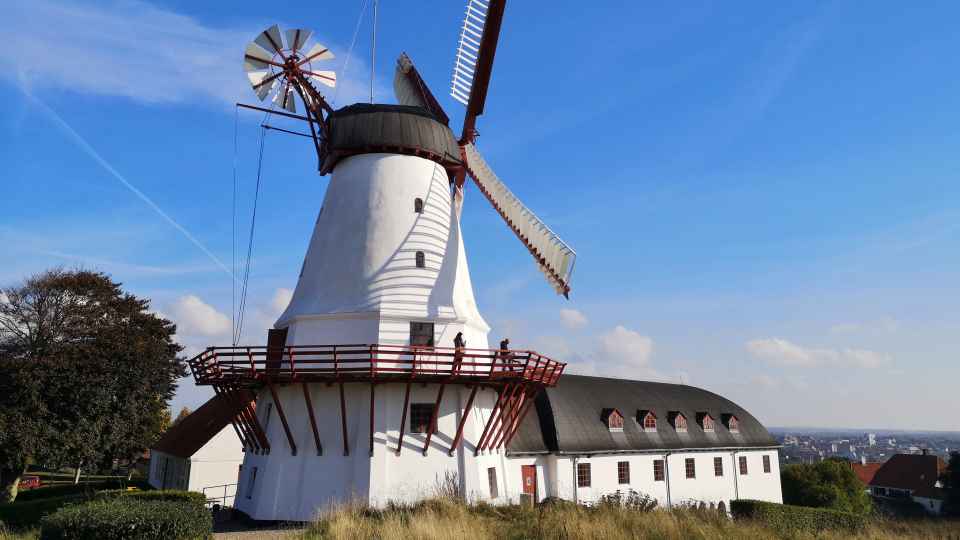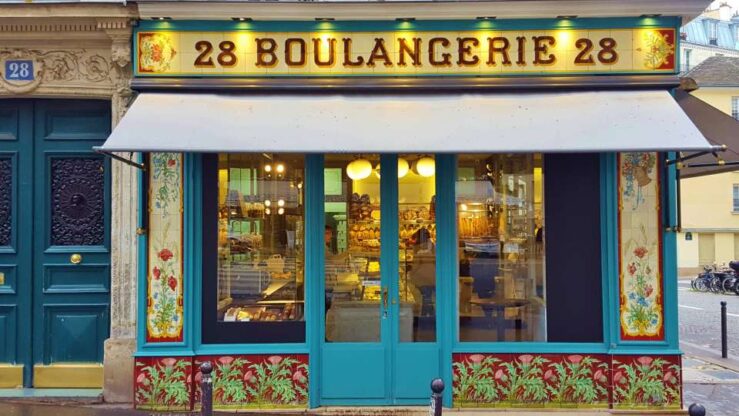Exploring the Historic Places at Dybbøl in Southern Jutland
1. Sønderborg
2. Dybbøl Mill
3. History Centre Dybbøl Banke
4. The Gendarme Path
5. Cathrinesminde Brickworks
6. Gråsten Palace
7. Augustenborg
A Danish tradition, tilting at the ring, also known as ‘ringridning’ in Danish, is a popular sporting event in Southern Jutland. The regional discipline is, with its annual tournaments, a traditional part of the summer festivals in this corner of Denmark – which also features the iconic Dybbøl Mill, or Dybbøl Mølle.
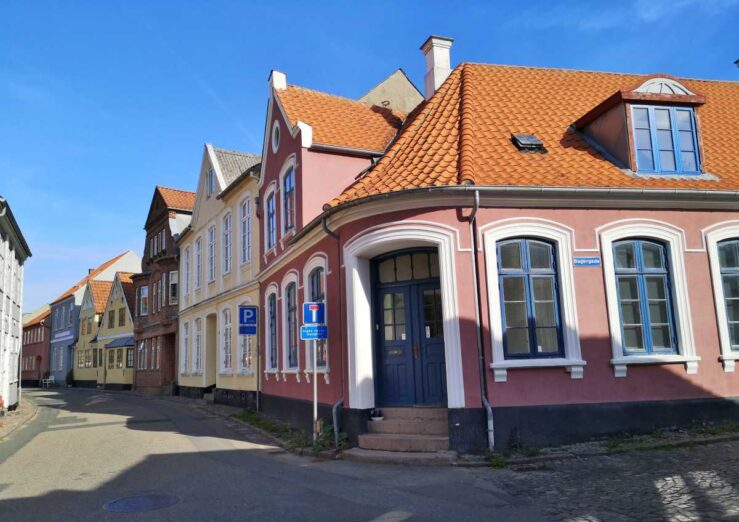
Sønderborg idyll of traditional houses | Photo: Travel In Culture
As the capital of Als, the easternmost island in Southern Jutland, Sønderborg is a Danish town in a maritime setting along Flensburg Fjord – the surroundings creating a unique atmosphere here. It is a charming town with little alleyways of traditional century-old houses, a rich cultural life and the most adorable harbour view!
The waterfront is an ideal place to begin if you want a convenient location to take in all impressions, and it is only a short walk from the idyllic streets boasting traditional Danish townhouses.
Near the waterfront, you will soon spot the old castle, Sønderborg Castle, a relatively solid square construction strategically placed. The king would want to keep a lookout for who was approaching Sønderborg from the seaside.
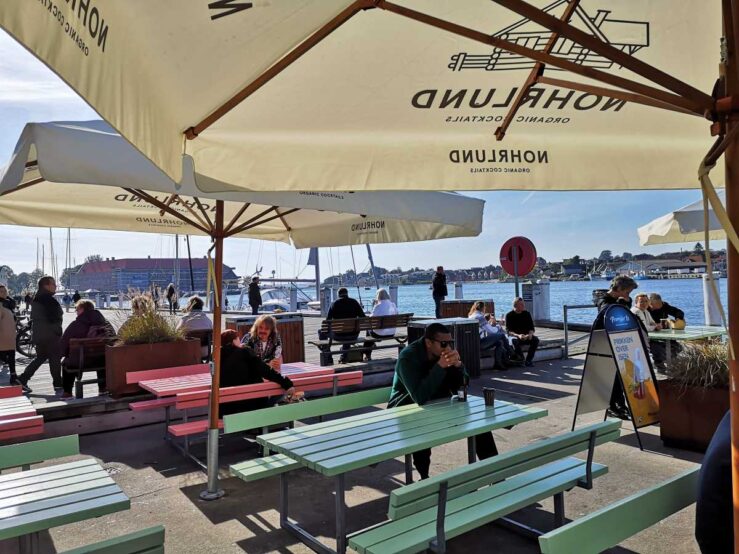
Sønderborg’s waterfront is a vibrant place, backdropped by Sønderborg Castle | Photo: Travel In Culture
Sønderborg has its share of Danish Royal history as a Royal prisoner sat in Sønderborg Castle. From 1532 to 1549, King Christian II was kept here behind the thick walls, and according to several sources, he (and other prisoners throughout the years) ‘drilled’ a groove with his thumb all around the edge of the prison table. When strolling along the waterfront, look at the table sculpture clearly showing the groove!
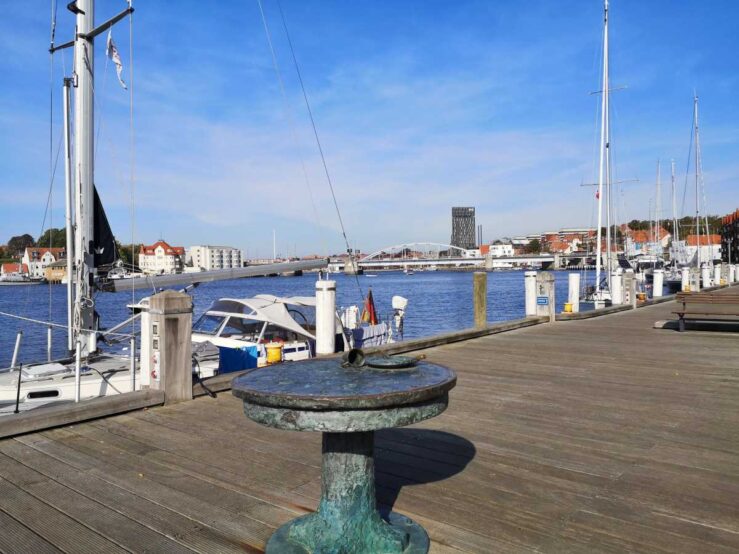
Sculpture of King Christian II’s prison table, which he endlessly walked around at Sønderborg Castle – creating the famous groove | Photo: Travel In Culture
Sønderborg Castle is today a regional museum introducing visitors to the Schleswig Wars, the Reunification and other significant history, culture and art with importance in Southern Jutland. Discover the beautiful Renaissance church from 1570 and the Knights’ Hall.
Along the waterfront, you can enjoy panoramic views of the city, the boat traffic, Sønderborg Castle – and even the renowned Dybbøl Mill (‘Dybbøl Mølle’) atop a hill at Dybbøl Banke, a few kilometres away.
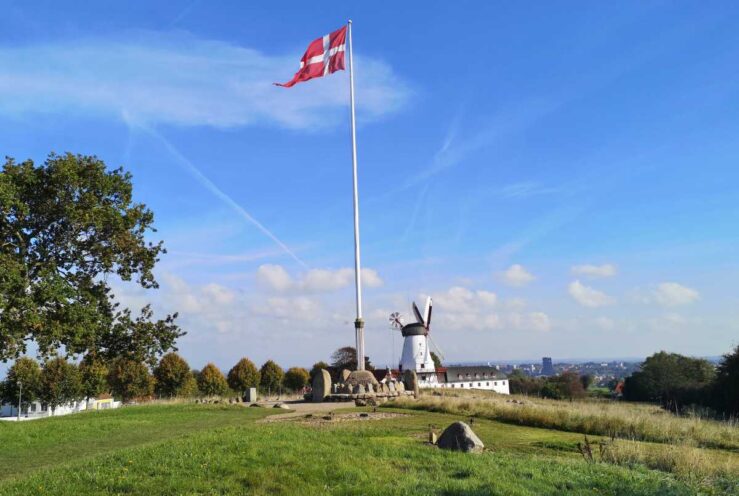
Dybbøl Mill | Photo: Travel In Culture
The first mill was erected at Dybbøl in 1744. It was the first mill out of several mills at Dybbøl due to several fire incidents in the following centuries where devasting fires more than once burned down the solid mill constructions, most recently in 1935. Nevertheless, the mill was each time reconstructed in the same place, overlooking the surrounding scenic landscape.
In 1848, when the First Schleswig War, or the Three-Year War, broke out, the Danish army organised an observation post right here. During the following year, Dybbøl Mill was involved in an extensive battle between Danish and German troops, which unfortunately resulted in the mill burning down.
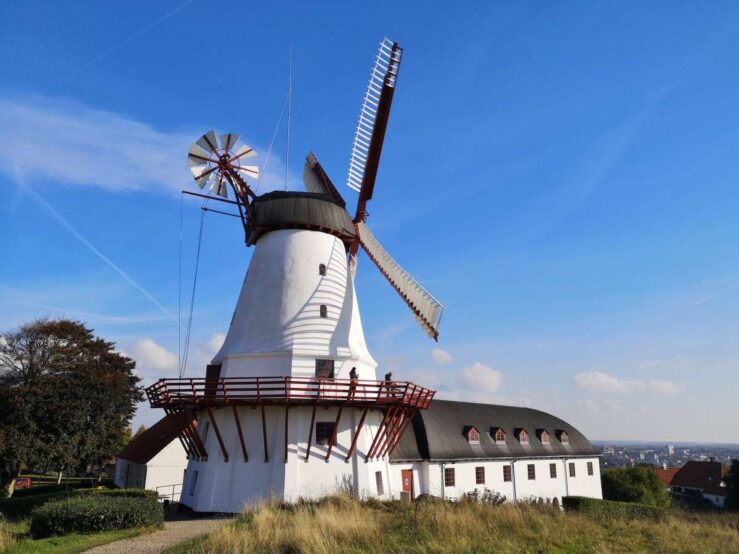
Dybbøl Mill / Photo: Travel In Cuture
Again in 1864, Dybbøl and the new Dutch-style windmill ended up as the focal point in the Second Schleswig War after the Danish army had been defeated at Dannevirke further south. At Dybbøl, the Danish soldiers now tried to fight against and resist the Prussian wave of bombings. On 15th March, the mill was severely damaged by a bomb attack and it partly collapsed.
A month later, on 18th April, Dybbøl was stormed, and a considerable number of Danish soldiers lost their lives. With this final defeat, Denmark had lost the Duchies of Schleswig, Holstein and Lauenburg.
Once again, Dybbøl Mill was rebuilt, and Germany celebrated their victory by raising a large monument, Dybbøl Memorial, or Düppel Denkmal, atop the hill at Dybbøl Banke in 1872. The monument survived until 1945 when Danish freedom fighters partly destroyed it. Today, only modest remains of the memorial exist in the area.
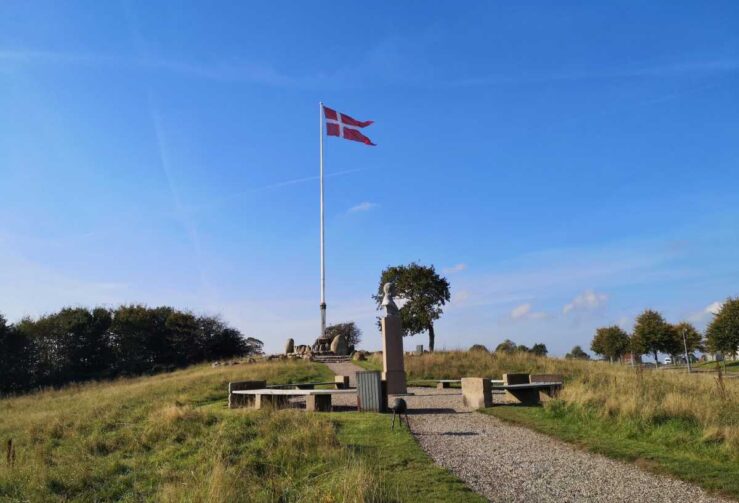
Dybbøl memorial site | Photo: Travel In Culture
In 1914 Germany celebrated the 50th anniversary of their final victory here at the King’s Redoubt. Anyway, soon hereafter – at the end of World War I – the land became Danish again when the Danish-German border in 1920 was moved from Kongeåen further up north, resulting in the ‘Reunification’ at Dybbøl Banke with the participation of 50,000 people, the Danish King Christian X included.
Still today, there are annual celebrations and commemorations at Dybbøl, and the iconic Dybbøl Mill continues to be a symbol of Denmark and Reunification.
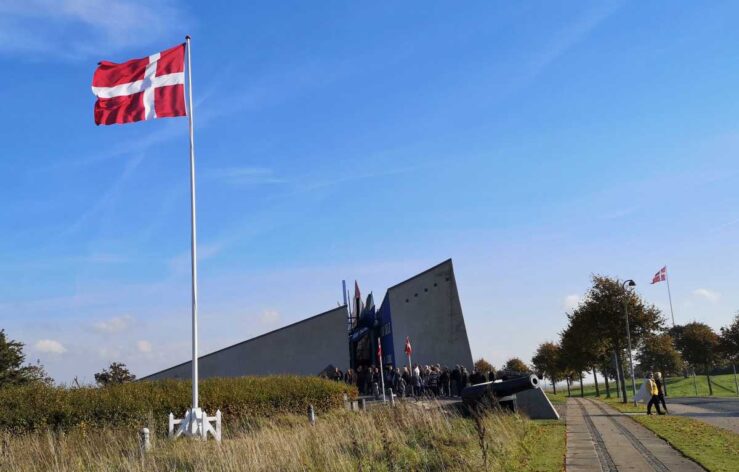
History Centre Dybbøl Banke | Photo: Travel In Culture
Near Dybbøl Mill at Dybbøl Banke, the History Centre Dybbøl Banke (Historiecenter Dybbøl Banke) is a site where you can step directly into the War of 1864 and the other battles sweeping across Dybbøl Banke more than a hundred years ago.
Inside the soldiers’ town, you will have the chance to explore the nearly authentic soldiers’ barracks and hear the cannon balls fired in the museum area featuring a highly spectacular museum building. The remarkable structure was designed by the architects Ernst Lohse and Michael Freddie, and it rises as a unique building in the landscape.
Wrapped in explicit war symbols, with odd angles and uneven surfaces full of details relating to the war and arms used, it appears as a building veritably sinking into a chaotic battlefield. The contrast is stark to the peaceful Dybbøl Mill just a stone’s throw away. A visit here is unquestionably a way to relive the Battle of 1864!
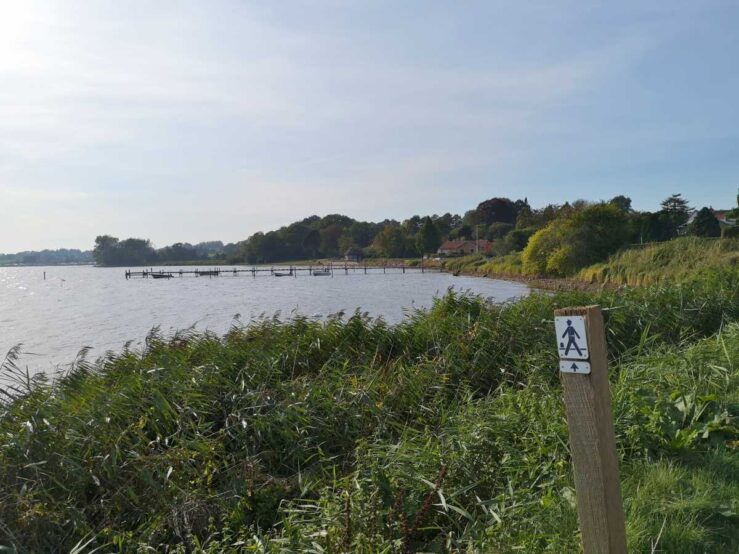
The Gendarme Path | Photo: Travel In Culture
Als and Broagerland, two regions on each side of Sønderborg, are both areas of scenic beauty and with great hiking options.
Now that you are close to the German border as defined by Flensburg Fjord, you may enjoy an excellent hike in the Danish/German borderlands along the old Gendarme Path (Gendarmstien).
The historic Gendarme Path has been declared a ‘quality trail’ ensuring nature hiking in a varied landscape consisting of woodlands, bogs, meadows and coastal areas, and providing surprising, panoramic views and fascinating cultural sights along the way.
The track used to be the ‘line’, where the Danish officers (‘gendarmes’) patrolled regularly to guarantee that no illegal activity happened between the two countries and that no smugglers were operating during the day or the night hours.
The Gendarme Path stretches all 84 km past Padborg, Gråsten, Dybbøl, Sønderborg and Høruphav, and the border gendarmes used it from its establishment in 1839 right until 1958!
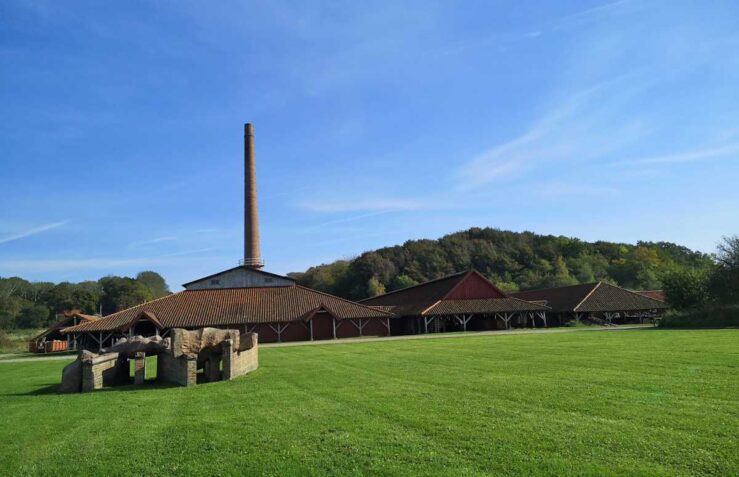
Cathrinesminde Brickworks | Photo: Travel In Culture
Along the trail, you will find another interesting site. Cathrinesminde Brickworks (Cathrinesminde Teglværk) is one of the former brickworks in this part of the country, today a museum and an industrial heritage site.
The brickworks were established by a local farmer in 1732, and part of the bricks produced were used to rebuild the houses in the Danish capital after the Fire of Copenhagen of 1728. The brickyard remained in operation until 1968. Today, it is a unique place to learn about the old brick industry.
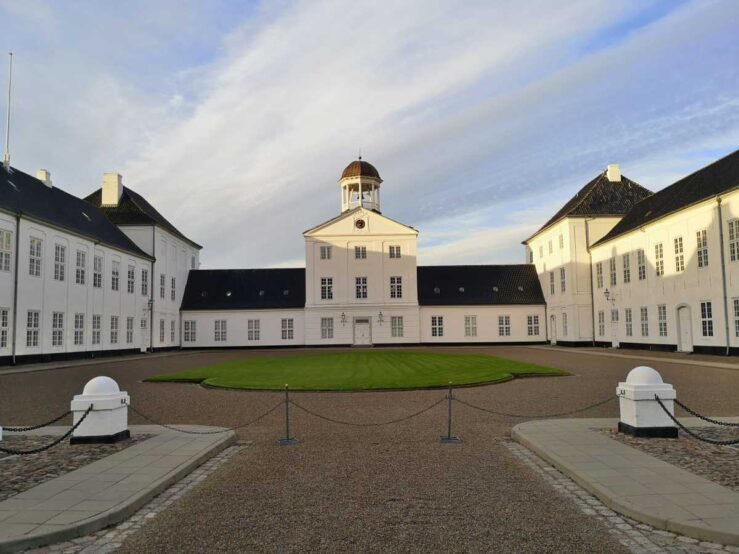
Gråsten Palace | Photo: Travel In Culture
Gråsten Palace is known as the Royal family’s summer residence.
In the 16th century, the Palace was erected as a hunting and leisure site, but, unfortunately, it burned down as early as 1757 – after it had been converted to a baroque palace by Chancellor Frederik Ahlefeldt. After the fire, a new palace construction replaced the original complex.
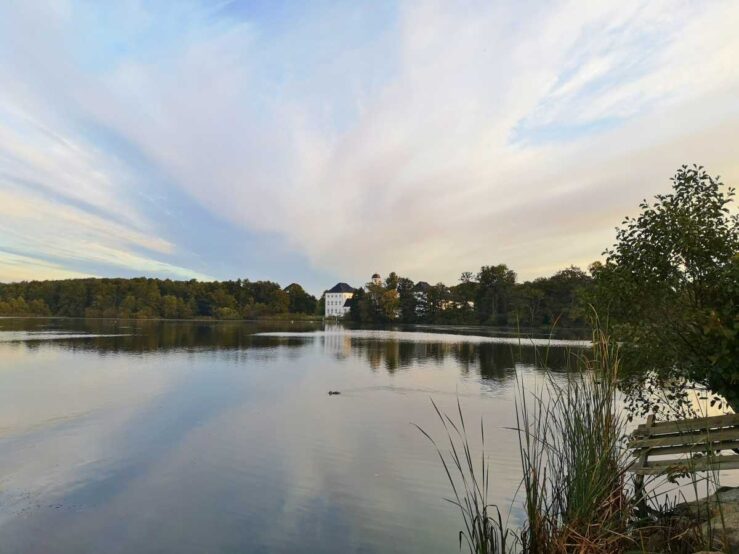
Gråsten Palace Photo: Travel In Culture
In recent times, Gråsten Palace has been the late King Frederik and Queen Ingrid’s property, and she organised a lovely flower garden there. After his, and later her death in 2000, it has been used by Queen Margrethe, her husband Henrik and the younger generation of the Royal family.
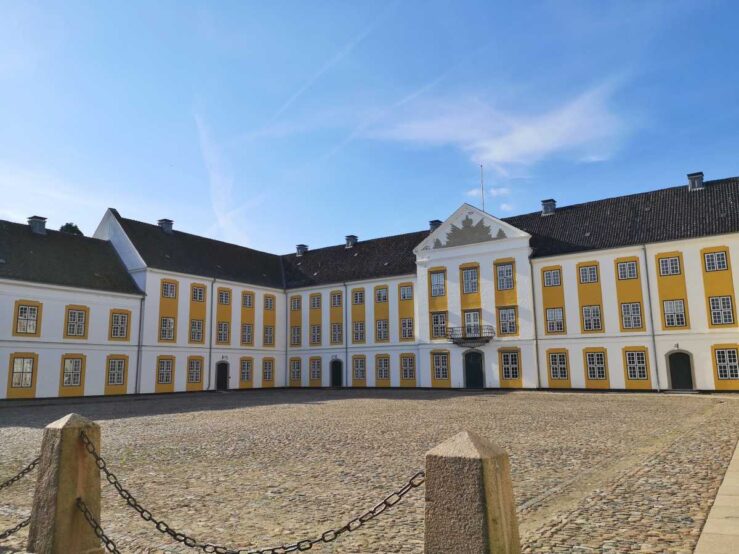
Augustenborg | Photo: Travel In Culture
On the Als side of Sønderborg, you will arrive at Augustenborg, a small town featuring one of the most impressive baroque palaces in Denmark – worth a visit, although there is no access to the interior of the castle.
The famous Danish author Hans Christian Andersen visited the place – and perhaps found inspiration here for one of his fairy tales. Later, it served for many years as a psychiatric hospital.
Do you need inspiration for cultural things to do in Copenhagen? Find it here: 9 Awesome Things to Do in Copenhagen
Read next: Visit the Skagen Painters and Climb the Cliffs of Møn
Travel Insurance / Visa
Have you considered what you will do in the (unlikely) event of something unforeseen happening? Do you need a travel insurance? Check here if you need a travel insurance for your trip – and check here if you need a visa for your trip and apply for it!
Exploring Dybbøl Mill in Southern Jutland
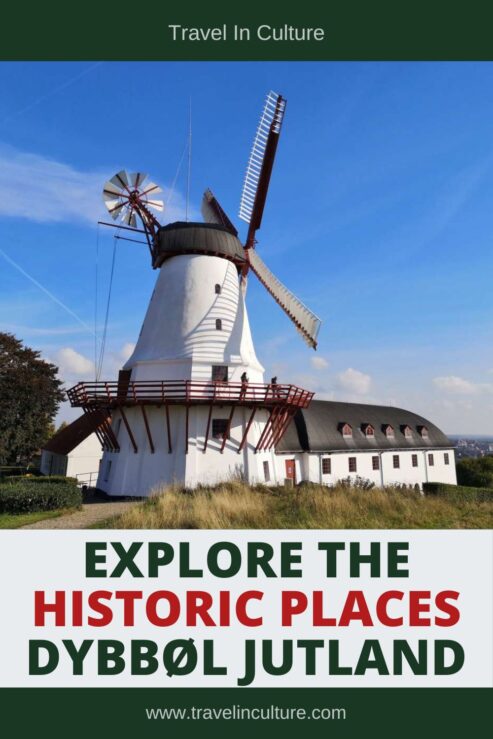 Dybbøl Mill in Southern Jutland
Dybbøl Mill in Southern Jutland
Featured image of
Exploring Dybbøl Mill in Southern Jutland:
Travel In Culture


